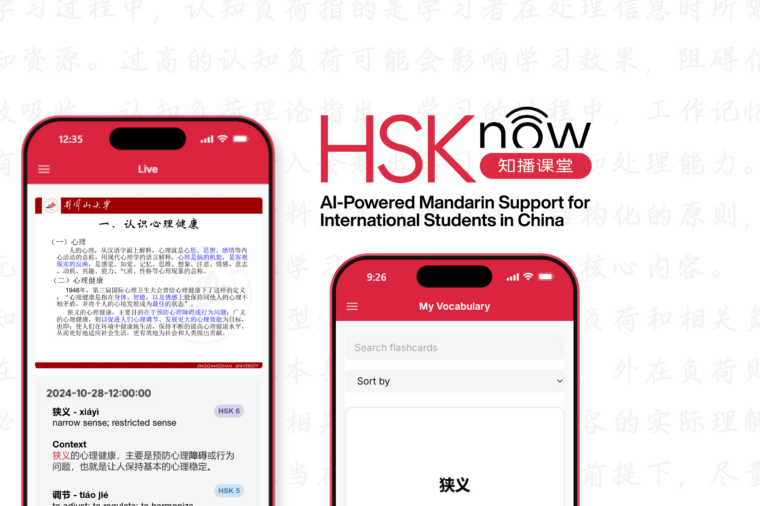AI-Powered Mandarin Support for International Students in China
HSKnow is a web application tailored to support non-native Mandarin-speaking students enrolled in Chinese-taught university programs. Inspired by Microsoft PowerPoint’s real-time subtitling, HSKnow uniquely leverages generative AI to provide live, customized vocabulary support during lectures, bringing the “know” to the “now.” Unlike typical language support tools that transcribe or translate all content, HSKnow is designed around the HSK (Chinese proficiency exam) framework, delivering targeted assistance only on vocabulary that is predicted to challenge individual students. This approach reduces cognitive load, supporting more effective learning.

The Challenge
Students pursuing degrees in a foreign language instructional environment are tasked with not only comprehending the material, but being able to engage with the content, ask meaningful questions, and apply their knowledge. However, with many faculty themselves unable to provide personalized support due to the limitations of their own linguistic repertoire and time constraints, students independently take on this challenge, often attempting to follow along in real time with a translator tab open, rapidly inputting unfamiliar terms just to keep up with a lecture.
The Chinese language (in this context, simplified Mandarin Chinese) comes with unique challenges and affordances that situate it as a necessary context to develop such a tool. As a logographic language, it is not always intuitive to make a mental linkage between the written form of a character and its corresponding romanization or pinyin. If an unfamiliar word is displayed or spoken, the student cannot directly “sound it out” as even the correct romanization will output a number of possible characters that all mean different things entirely. See an example below:

While the language does present difficulties, there are standardized frameworks in place that put an emphasis on learning: the HSK (汉语水平考试), or Chinese proficiency test is a universal framework that ascribes a level (1-6 and more recently, 7+) to most commonly seen words in Mandarin. The corresponding exams are used as a benchmark for admission to a Chinese university, typically ranging from levels 4-6+ depending on the level of study, discipline, and university tier. Even so, a high score of an advanced HSK level can only get a student so far. When faced with domain-specific terminology, proper nouns, or culturally embedded concepts, sometimes even a dictionary cannot provide all the answers, let alone in a timely manner.
Because of this system, all international students enrolled in a Chinese university have an HSK level and score, which can be leveraged by a custom GPT to predict what terms may be unfamiliar. HSKnow functions as a web app extension of Microsoft PowerPoint’s real-time subtitling function, powered by a custom GPT that is trained to take a user’s HSK level, and using its repository of all HSK vocabulary by level, make instant predictions to supply the user with just the right level of support.
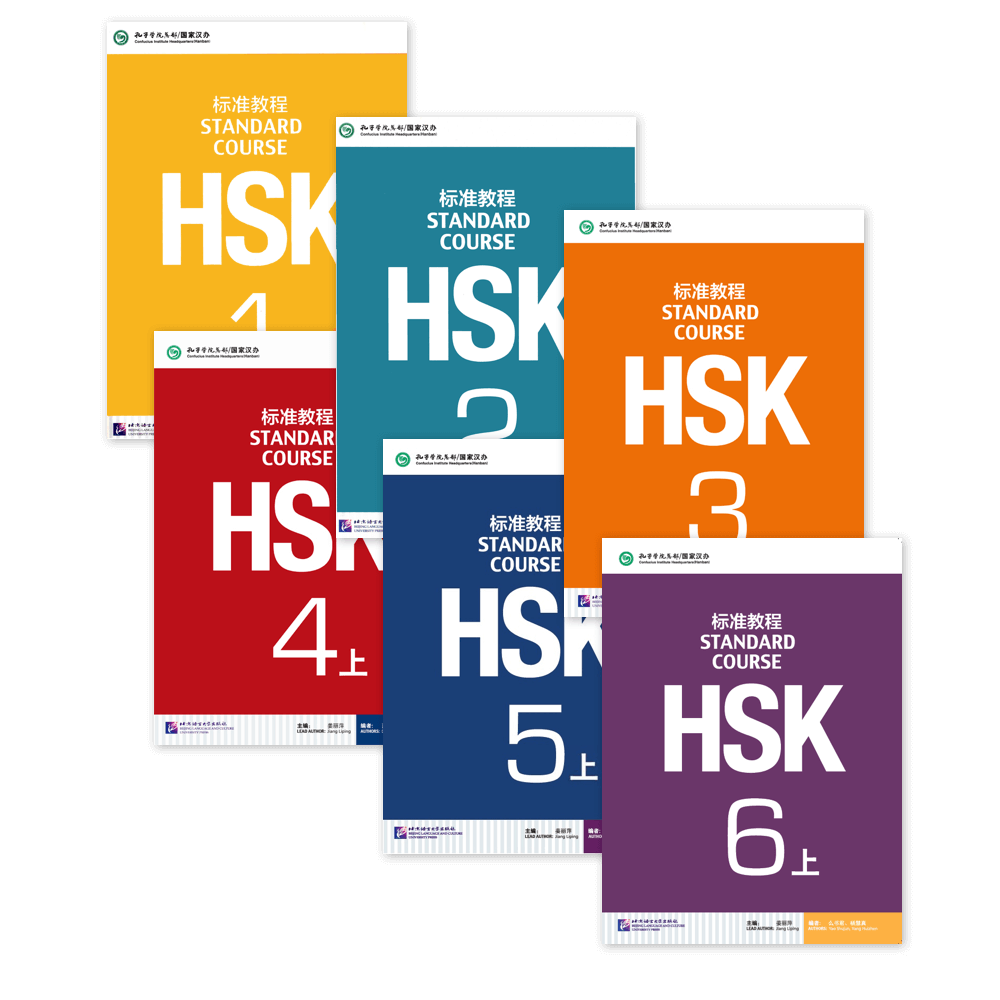
The Solution
Grounded in cognitive science principles—such as cognitive load theory and the zone of proximal development—HSKnow is designed with three main goals in mind: 1) to foster active engagement with the Chinese language, gradually reducing reliance on support; 2) to relieve students of the burden of keeping up with challenging lecture material independently; and 3) to promote collaborative relationships between faculty and international students, a significant and growing demographic in Chinese universities.
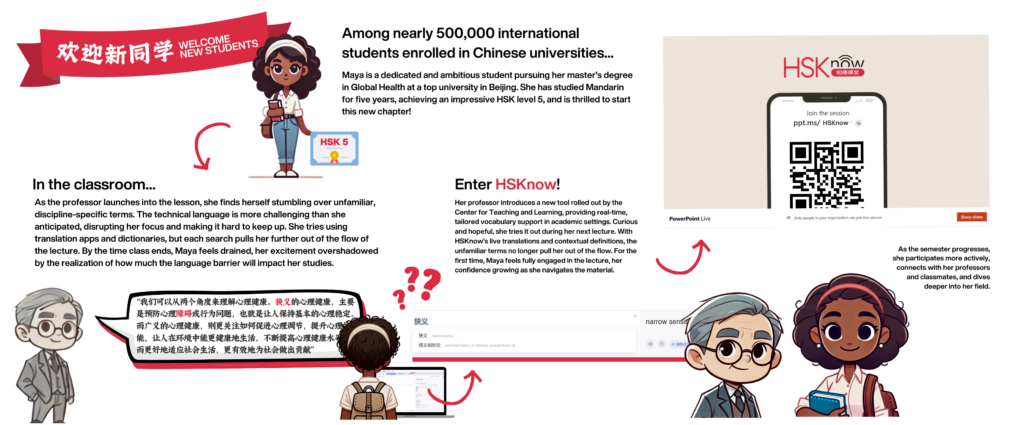
To reach these goals, HSKnow has the following features:
Vocabulary storage and flashcards: Often times, when students are faced with unfamiliar term after unfamiliar term, they do not have the time or capacity to commit each term to memory beyond the initial momentary understanding. HSKnow collects each new word in a personalized inventory that can be later reviewed as flashcards or as a tailored vocabulary list to encourage retention.
Requires the participation of both instructors and students: To encourage bi-directional investment in this learning experience, faculty enable this web app in their lectures, which would appear as a QR code at the beginning of a class. Students can choose to opt-in on their own devices, select their respective base language, and follow along more confidently in class.
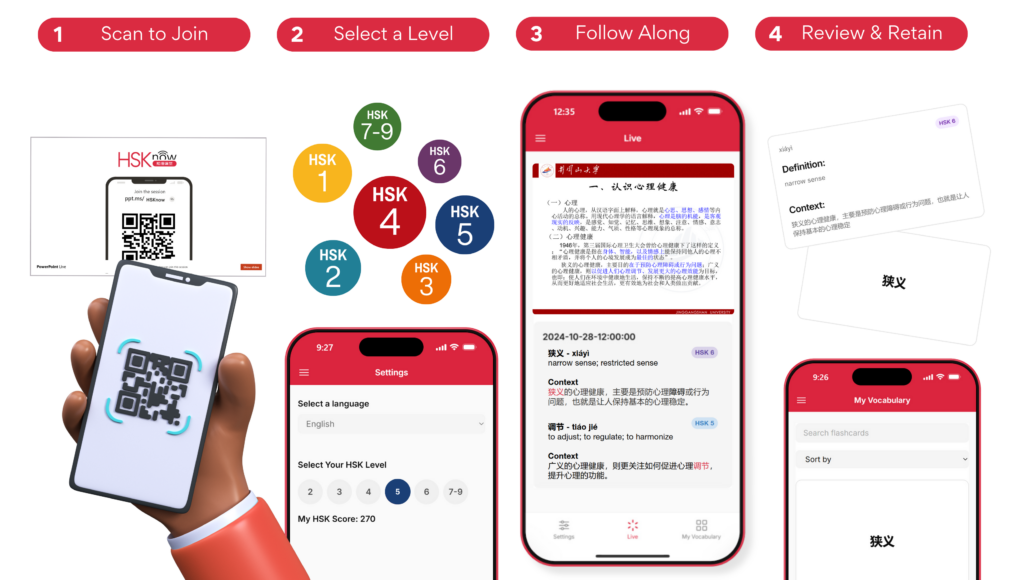
Demo
Process and Reflection
The development of HSKnow, initially a personal endeavor and an opportunity to rekindle my passion for learning Mandarin and tackle the challenges I once faced studying in a Chinese-language environment has evolved into a valuable lesson in understanding the unique needs of other learners. I was motivated to look beyond my own experience to design a tool that respects the diverse cultural and academic demands placed on international students in China. One of the most rewarding aspects of the learning journey has been navigating the cultural intricacies involved in creating a tool for a foreign context. While the technical development is ongoing, this project has continually challenged me to adapt, think critically, and create purposefully in the language-learning EdTech space.
Early Prototype
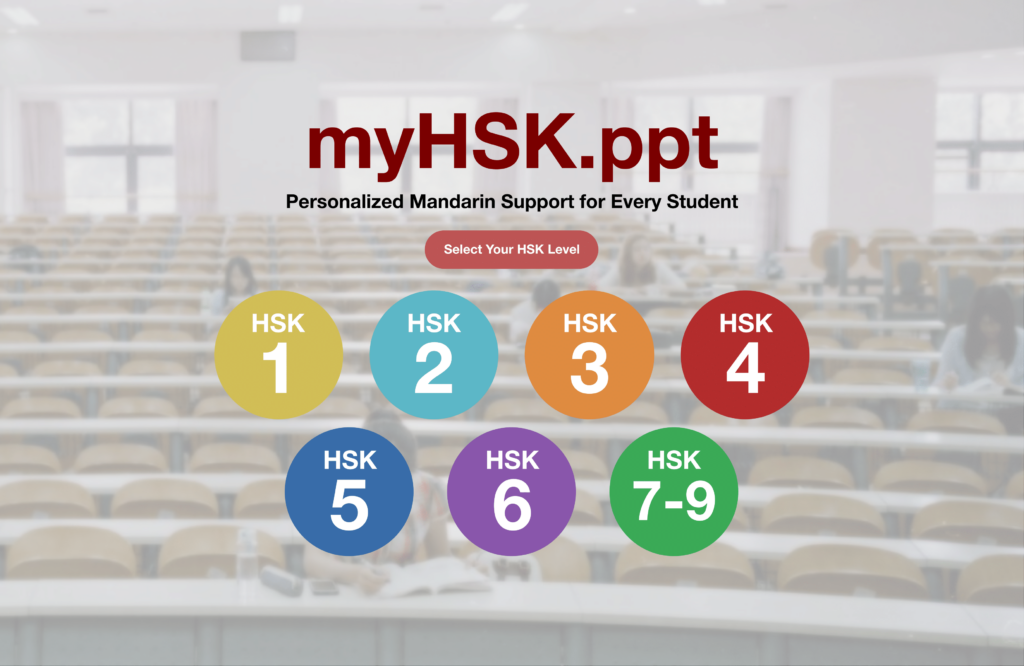
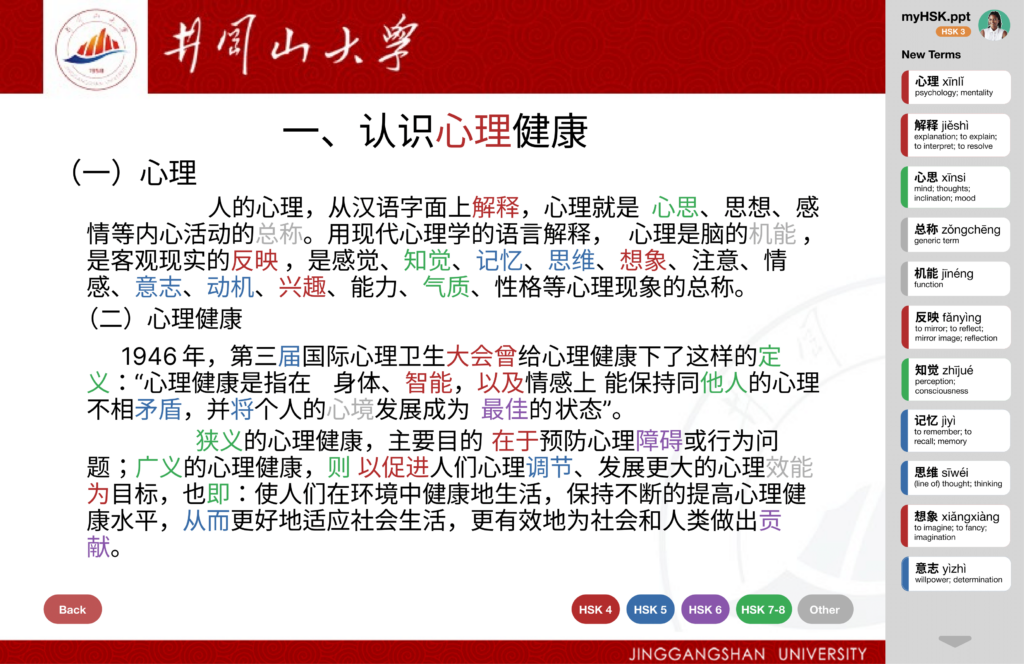
As higher education becomes increasingly globalized, language barriers and the challenges of studying in a foreign-language environment are universal issues that impact students worldwide. Whether it’s an American student in Beijing, a Chinese student in Boston, or any international learner navigating a new linguistic and cultural context, the need for real-time, adaptive language support transcends specific contexts. In the future, this tool could be adapted to support a variety of languages and educational contexts, from high school to professional training. By enabling students to engage with complex material in their non-native language, I hope HSKnow (or its future iterations) can serve as a starting point for the development of inclusive and accessible learning support systems.
